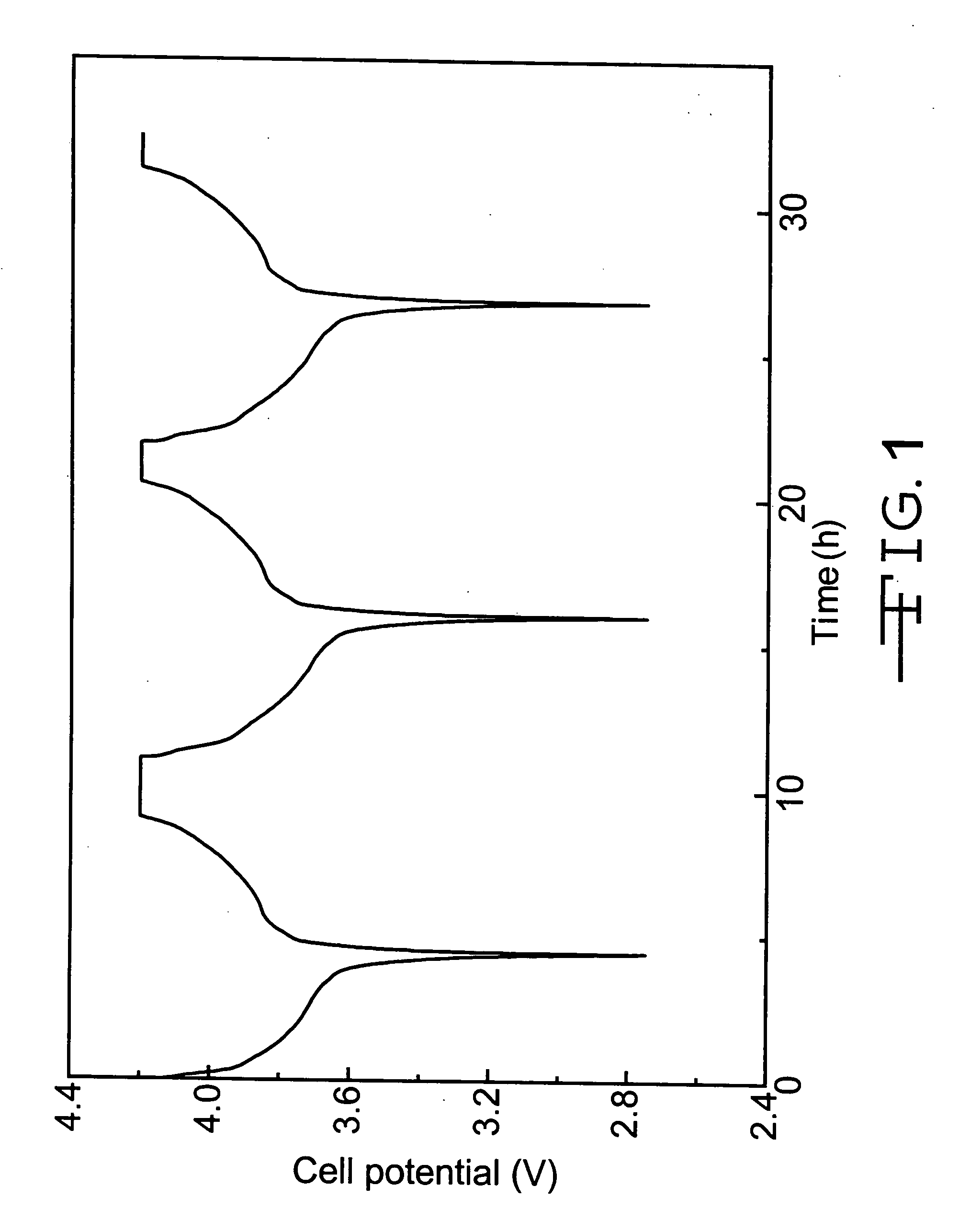In situ thermal polymerization method for making gel polymer lithium ion rechargeable electrochemical cells
a technology of lithium ion and electrochemical cells, applied in the field of electrochemical power sources, can solve the problems of inability to realize the improvement of the functionalities of gel polymer electrolyte comprising acrylate, and low functionality of acrylate, so as to achieve the effect of improving production efficiency
- Summary
- Abstract
- Description
- Claims
- Application Information
AI Technical Summary
Benefits of technology
Problems solved by technology
Method used
Image
Examples
example i
[0033] Polymer electrolyte precursor solutions were prepared from, by weight, 8% of co-monomers consisting of ethoxylated trimethylolpropane triacrylate (ETMPTA) and di(trimethylolpropane) tetraacrylate (DTMPTA) mixed with a liquid electrolyte solution of 1M LiPF6 in 2EC:PC. The weight ratios of ETMPTA / DTMPTA were 3:1, 1:1 and 1:3 for the polymer electrolyte precursor solutions used in test cells nos. 1a, 1b and 1c, respectively. To the above solutions, 0.5% ACN as a thermal initiator was added.
[0034] Test cell nos. 1a to 1c were constructed having an negative electrode of, by weight, 91.7% mesocarbon microbeads (MCMB 25-28) and 8.3% PVDF powders mixed with NMP. The resulting anode active slurry was coated on a 10.2 μm thick copper current collector substrate. The positive electrode was formed by mixing powders of, by weight, 91.0% LiCoO2, 3.0% PVDF and 6.0% graphite in a solvent of NMP coated to a thickness of 25.4 μm on an aluminum current collector substrate. The electrode activ...
PUM
| Property | Measurement | Unit |
|---|---|---|
| temperature | aaaaa | aaaaa |
| weight percent | aaaaa | aaaaa |
| weight percent | aaaaa | aaaaa |
Abstract
Description
Claims
Application Information
 Login to View More
Login to View More - R&D
- Intellectual Property
- Life Sciences
- Materials
- Tech Scout
- Unparalleled Data Quality
- Higher Quality Content
- 60% Fewer Hallucinations
Browse by: Latest US Patents, China's latest patents, Technical Efficacy Thesaurus, Application Domain, Technology Topic, Popular Technical Reports.
© 2025 PatSnap. All rights reserved.Legal|Privacy policy|Modern Slavery Act Transparency Statement|Sitemap|About US| Contact US: help@patsnap.com

